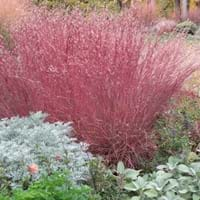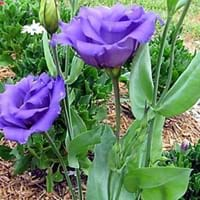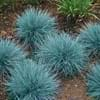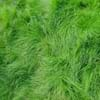Life Span
Annual
Biennial
Origin
North America, United States, Northeastern United States, Mid-Atlantic United States, Southeastern United States, North-Central United States, Central United States, South-Central United States, Southwestern United States, Mexico
Southwestern United States, Mexico
Types
Greener Pastures
Not Available
Habitat
Grassland
gardens, Grassland, River side
USDA Hardiness Zone
4-9
Not Available
AHS Heat Zone
10 - 3
12 - 1
Sunset Zone
1a, 1b, 2a, 2b, 3a, 3b, 4, 5, 6, 7, 8, 9, 10, 11, 12, 13, 14, 15, 16, 17, 18, 19, 20, 21, 22, 23, 24
21,22
Habit
Clump-Forming
Upright/Erect
Flower Color
Purple
Blue, Lavender, Blue Violet
Flower Color Modifier
Bicolor
Bicolor
Fruit Color
Not Available
Non Fruiting Plant
Leaf Color in Spring
Light Green
Gray Green
Leaf Color in Summer
Light Green
Gray Green
Leaf Color in Fall
Red, Purple
Gray Green
Leaf Color in Winter
Tan
Light Green
Leaf Shape
Grass like
Oval
Plant Season
Summer, Fall, Winter
Spring, Summer
Sunlight
Full Sun, Partial Sun
Full Sun, Partial Sun
Type of Soil
Loam, Sand
Clay, Loam, Sand
The pH of Soil
Acidic, Neutral, Alkaline
Neutral, Alkaline
Soil Drainage
Well drained
Well drained
Bloom Time
Late Summer, Early Fall
Spring, Late Spring, Early Summer, Summer, Late Summer
Tolerances
Drought
Not Available
Where to Plant?
Ground
Container, Ground, Pot
How to Plant?
Divison, Seedlings
Seedlings, Stem Planting
Plant Maintenance
Medium
Medium
Watering Requirements
Medium
Keep the ground moist but not water-logged, Requires watering in the growing season, Water more in summer
In Summer
Lots of watering
Lots of watering
In Spring
Moderate
Moderate
In Winter
Average Water
Average Water
Soil pH
Acidic, Neutral, Alkaline
Alkaline, Neutral
Soil Type
Loam, Sand
Clay, Loam, Sandy
Soil Drainage Capacity
Well drained
Well drained
Sun Exposure
Full Sun, Partial Sun
Full Sun, Partial Sun
Pruning
Remove damaged leaves, Remove dead branches, Remove dead leaves
Remove damaged leaves, Remove dead branches, Remove dead leaves
Fertilizers
All-Purpose Liquid Fertilizer
All-Purpose Liquid Fertilizer
Pests and Diseases
Red blotch
Red blotch
Plant Tolerance
Drought
Drought
Flower Petal Number
Single
Single
Foliage Texture
Fine
Medium
Foliage Sheen
Matte
Matte
Attracts
Butterflies
Bees, Butterflies
Allergy
Not Available
no allergic reactions
Aesthetic Uses
Showy Purposes
Beautification, Bouquets
Beauty Benefits
Not Available
Not Available
Environmental Uses
Air purification
Air purification
Medicinal Uses
Not Available
No Medicinal Use
Part of Plant Used
Leaves, Root
Flowers
Other Uses
Showy Purposes
Showy Purposes, Used as Ornamental plant
Used As Indoor Plant
No
Sometimes
Used As Outdoor Plant
Yes
Yes
Garden Design
Cutflower, Dried Flower/Everlasting, Groundcover, Mixed Border, Rock Garden / Wall
Cutflower, Edging, Feature Plant, Foundation
Botanical Name
ERAGROSTIS spectabilis
EUSTOMA grandiflorum 'Florida Blue'
Common Name
Purple Lovegrass
Florida Blue Lisianthus, Lisianthus
In Hindi
eragrostis spectabilis
फ्लोरिडा Lisianthus
In German
eragrostis spectabilis
Florida Lisianthus
In French
eragrostis spectabilis
Floride Lisianthus
In Spanish
Eragrostis spectabilis
lisianthus Florida
In Greek
eragrostis spectabilis
Φλόριντα lisianthus
In Portuguese
Eragrostis spectabilis
Florida Lisianthus
In Polish
Eragrostis okazałe
Florida Eustoma
In Latin
Eragrostis spectabilis
Florida Lisianthus
Phylum
Magnoliophyta
Not Available
Class
Liliopsida
Not Available
Order
Cyperales
Gentianales
Family
Poaceae
Gentianaceae
Clade
Angiosperms, Commelinids, Monocots
Angiosperms, Asterids, Eudicots
Tribe
Eragrostideae
Not Available
Subfamily
Chloridoideae
Paperveroideae
Number of Species
Not Available
Not Available
Season and Care of Purple Lovegrass and Florida Lisianthus
Season and care of Purple Lovegrass and Florida Lisianthus is important to know. While considering everything about Purple Lovegrass and Florida Lisianthus Care, growing season is an essential factor. Purple Lovegrass season is Summer, Fall and Winter and Florida Lisianthus season is Summer, Fall and Winter. The type of soil for Purple Lovegrass is Loam, Sand and for Florida Lisianthus is Clay, Loam, Sand while the PH of soil for Purple Lovegrass is Acidic, Neutral, Alkaline and for Florida Lisianthus is Neutral, Alkaline.
Purple Lovegrass and Florida Lisianthus Physical Information
Purple Lovegrass and Florida Lisianthus physical information is very important for comparison. Purple Lovegrass height is 45.70 cm and width 5.10 cm whereas Florida Lisianthus height is 25.40 cm and width 25.40 cm. The color specification of Purple Lovegrass and Florida Lisianthus are as follows:
Purple Lovegrass flower color: Purple
Purple Lovegrass leaf color: Light Green
Florida Lisianthus flower color: Blue, Lavender and Blue Violet
- Florida Lisianthus leaf color: Gray Green
Care of Purple Lovegrass and Florida Lisianthus
Care of Purple Lovegrass and Florida Lisianthus include pruning, fertilizers, watering etc. Purple Lovegrass pruning is done Remove damaged leaves, Remove dead branches and Remove dead leaves and Florida Lisianthus pruning is done Remove damaged leaves, Remove dead branches and Remove dead leaves. In summer Purple Lovegrass needs Lots of watering and in winter, it needs Average Water. Whereas, in summer Florida Lisianthus needs Lots of watering and in winter, it needs Average Water.





